| Columns Retired Columns & Blogs |
...Robert Reina's words published again.
Always a joy to read.
A full set of measurements of the Audio Research VT100 was made using its balanced inputs, with selected measurements repeated in the unbalanced mode, as noted below.
Following preconditioning/warm-up, the VT100 was very hot, though not hotter than the normally expected range for a tube amplifier. The Audio Research VT100's input impedance measured 178k ohms (98.9k ohms, unbalanced). The output impedance (at the 8 ohm taps) measured a maximum of 1.26 ohms at 20Hz and 1kHz, and 1.54 ohms at 20kHz. Voltage gain measured 23.8dB into 8 ohms (and an almost identical 23.9dB, unbalanced). Signal/Noise ratio (ref. 1W into 8 ohms) measured 78.2dB over a 22Hz–22kHz bandwidth and 78dB over a 10Hz–500kHz bandwidth, both unweighted; and 91.4dB, A-weighted.
The VT100 is noninverting when driven from its unbalanced input; at the balanced, XLR input terminal, pin 2 is positive. DC offset measured 5mV in the left channel and 4mV in the right.
Fig.1 shows the frequency response of the VT100. The balanced response at 1W into 8 ohms is shown; the unbalanced response, and the response into other fixed resistive loads, was virtually identical. The response into a simulated real load (bottom traces in fig.1) was typical of an amplifier with a moderately high output impedance. The 10kHz squarewave response (fig.2) has good risetime with one cycle of damped overshoot. (The 1kHz squarewave, not shown, is moderately rounded at the leading edge.) Fig.3 shows the VT100's crosstalk—a very good result.
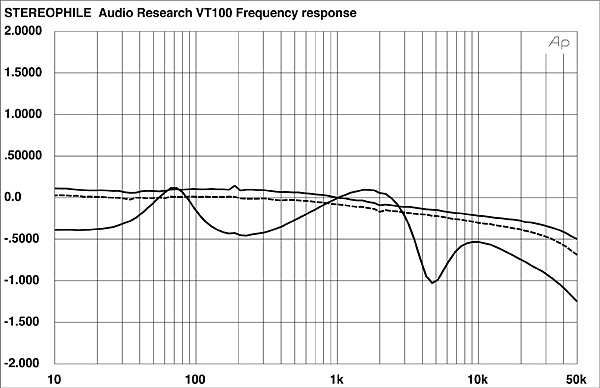
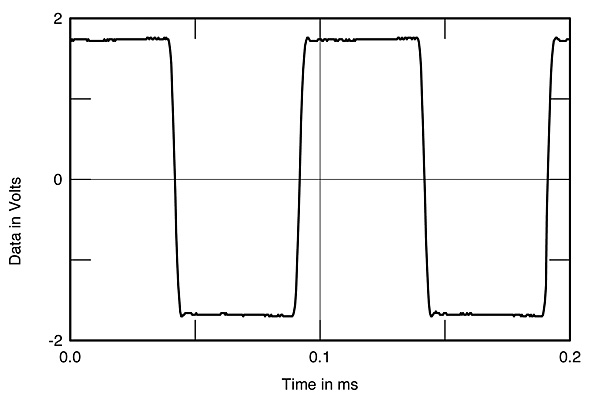
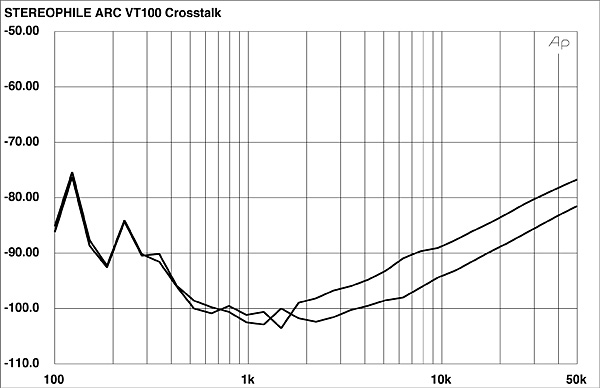
The THD+noise vs frequency curves are plotted in fig.4. Note that our 8 ohm tests were run from the 8 ohm tap, the 4 ohm from the 4 ohm tap, the simulated real load from the 4 ohm tap, and the 2 ohm from the 4 ohm tap. Since there is no 2 ohm tap, the noticeably higher THD with a 2 ohm load reflects the mismatch of driving a 2 ohm load from a 4 ohm tap (most loudspeakers that approach 2 ohms, however, do so only in a narrow band of the frequency range). Except for the rise in THD below 100Hz in some of the curves, this is a very good result.
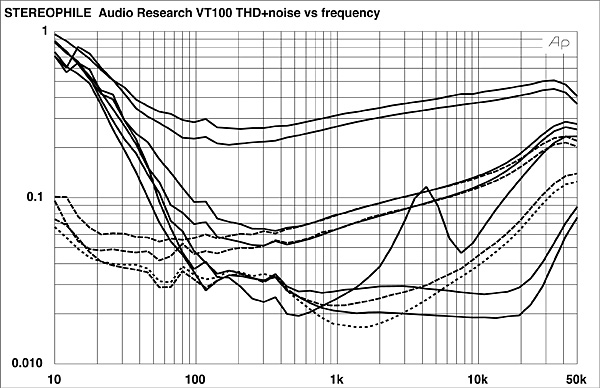
The waveform of the distortion at 2W into 4 ohms is shown in fig.5. It is heavily second-harmonic, with limited higher-order components. The waveforms (not shown) into 4 and 8 ohms were similar.
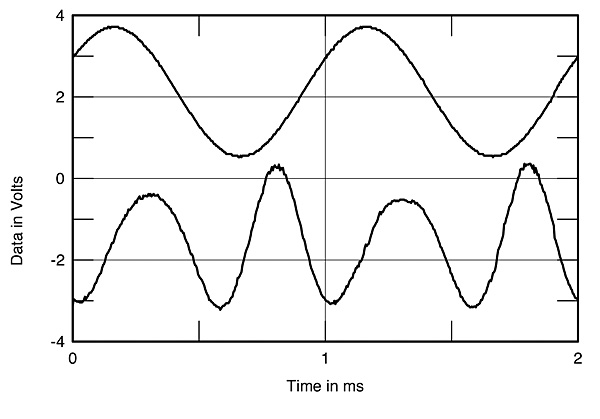
The VT100's output spectrum reproducing a 50Hz input at 67W into a 4 ohm load is shown in fig.6. The distortion products are relatively low in level—the highest are at 100 and 150Hz, at about $*–48dB (0.4%). The result into a simulated real load was similar, though with a slightly lower distortion at 100Hz and slightly higher at 150Hz.
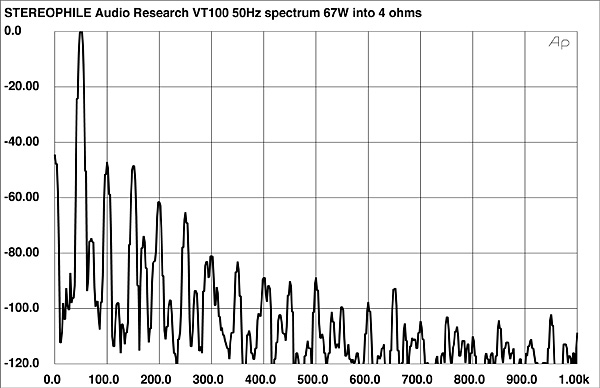
Fig.7 shows the output spectrum with a combined 19+20kHz signal—it shows the intermodulation products resulting from an equal combination of these two frequencies—at 47.7W into 4 ohms (visible clipping is present above this output with this signal). The largest component is at 1kHz ($*–41dB, or about 1%). The result at 50W into 8 ohms (not shown) is slightly better at 1kHz, a little worse at 2kHz.
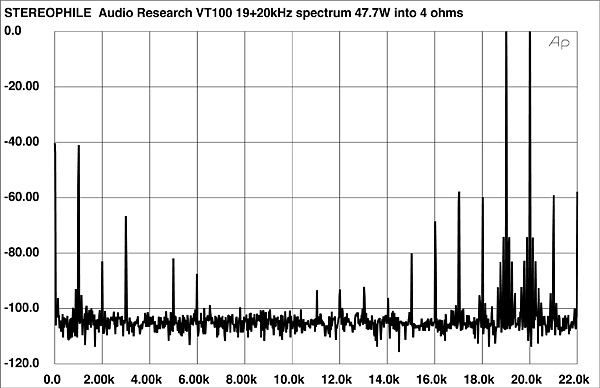
The 1kHz, THD+noise vs output curves for the VT100 are shown in fig.8. The discrete clipping levels for the VT100 are shown in the Table.
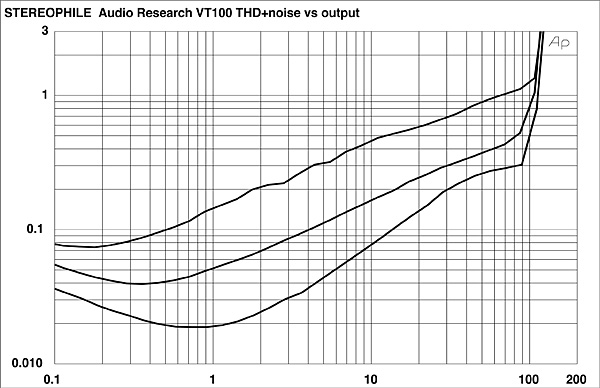
Other than driving a 2 ohms load from the 4 ohm tap, the VT100 exceeds its 100Wpc specification at our standard 1% THD+noise percentage, at least from its left channel. The VT100 was tested with the same set of tubes used by BJR for his review. From Table 1, it appears that one or more tubes in the right channel were suboptimal, resulting in a lower power output. I would not expect the difference to be audible in normal use. Apart from this and a small rise in THD below 100Hz in some of the curves (below 1% in any case), the Audio Research VT100 produced a solid set of measurements.—Thomas J. Norton
Table: Discrete Clipping levels (1% THD+noise at 1kHz)
| Impedance W (dBW) | Both Channels Driven | One Channel Driven W (dBW) L R L | |
| 8 ohms | 109.7 (20.4) | 96.2 (19.8) | 112.5 (20.5) |
| 4 ohms | 108.4 (17.4) | 85.6 (16.3) | 111.8 (17.5) |
| 2 ohms | 66.3 (12.2) | ||

...Robert Reina's words published again.
Always a joy to read.

I wish you wouldn't use $ amounts in the lede unless you are serious . The one I'm drawing your attention to would be the dreadful misuse of the amount $1000 . It catches the eye and then breaks the heart .

This particular review prompted a boatload of audio enthusiasts who had never dipped their toes into the world of tube amps to jump into the pool and drown. The original VT100 was not that great of an amp and to even approach the hype of this review required careful matching of preamp. Midrange was indeed a problem. Later iterations of the amp cured the problem somewhat. As the owner of several ARC amps I would offer the observation that this amp started the progression of ARC toward a solid state type of sound. Fortunately that house sound has softened just a bit as of present. Just a bit. Slam, authority, punch, and micro-detail are the calling cards, liquidity, timbre, tone, and soundstage depth are not.

Geez, I've bought and sold many ARC Amps & Preamps.
I never took one in that I wanted to personally own or keep. ( probably the reason for the trading-in )
ARC was THE Giant Audiophile GOD of my Generation.
HP at Absolute Sound was the only person that didn't give High Ground to Mr. W.Z.Johnson. Every other reviewer gave endless praise to all things ARC. And Conrad Johnson, come to think of it !!!
Krell, with beautiful Gold Screws and Grey Chassis quickly became the must have gear.
Electronics were all quite good but the Transducers were variables.
I discovered Koetsu, dynamic Drivers and Magnapans move the Sound Quality needle far better than top tier electronics which are necessary and critically important.
I also discovered that a TV repair Tech. can perk-up most Amplification Systems, if they are of a mind to.
I'd purchase one of these ARC Amps if I came across it. I'd clean it up and sell it in Asia. ARC is still a GOD like Brand.
and: ARC still provides service for all these old pieces.
Tony in Venice Florida
ps. these tubes are far too pricy for the sound quality they deliver

I hope that you are doing well. I have not seen you post here in a long while, so perhaps you won't see this.
So if not ARC, I am curious as to what you like in this market for very good performance and pricing?